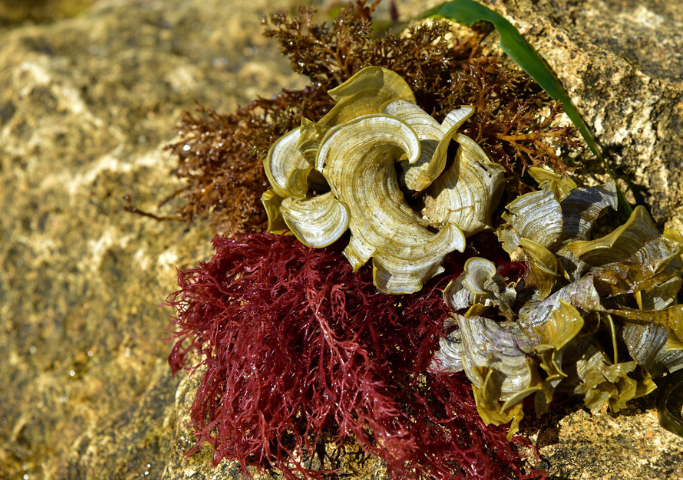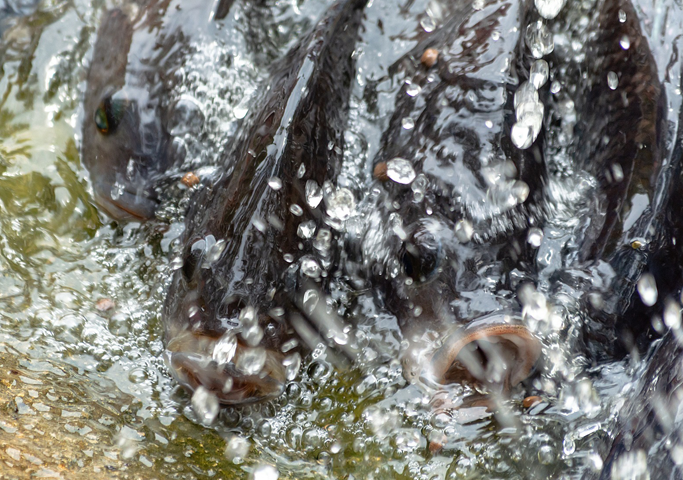
Why algae?
Currently in poultry production, feed represent the highest cost of production. For this and other reason there is a huge demand to find alternative feed or nutritional resources as substitutes for corn, soybean meal, and animal protein. Algae offer an alternative as they are valuable source of food and trace elements, considered one of the most important foods of the 21st century as a source of protein, lipids, polysaccharides, mineral, vitamins, and enzymes. Algae, in general are high in several nutrients, including beta-carotene, gamma linolenic, vitamin B12 and iron. They are introducing into poultry diets mainly as a rich source of long-chain n-3 polyunsaturated fatty acids, including docohexaenoico and eicosapentaenoicos. Analyses of the amino acid content of numerous algae have revealed that, although there is significant variation, they generally contain all the essential amino acids. Most experiments have shown that microalgae, mainly Spirulina and Chlorella from defatted biomass from biofuel production, can be successfully used as a feed ingredient in poultry nutrition.
Use of microalgae in poultry feed
- Chlorella vulgaris
It is generally accepted that the intestinal microflora plays an important role in maintaining animal health. Supplementation of poultry diets with Chlorella vulgaris has been shown to increase microbial diversity in the digestive tract, especially in the caeca (Janczyk et al., 2009). Other studies showed that it positively influenced laying performance, increasing the number and quality of eggs laid, as well as hatching performance.
- Spirulina
Research has shown that vitamin and mineral premixes are usually not needed when spirulina is included in the feed (Venkataraman et al., 1994). In addition, chickens receiving spirulina-supplemented diets had better health. This may be due to improved immune function (Belay et al., 1996). Recommended inclusion levels in poultry diets are 5 to 10% (Toyomizu et al., 2001). Higher inclusion levels will result in poor growth performance. Inclusion of spirulina in layer diets has also been shown to reduce the total cholesterol content of eggs and increase omega-3 fatty acid levels (Sujatha and Narahari, 2011).
Meet production
Algae products are good sources of protein, vitamins, trace elements, antioxidants, pigments, carbohydrates, and fatty acids, but most importantly, they contain high amounts of the beneficial polyunsaturated fatty acids, i.e., omega-3 fatty acids, particularly eicosapentaenoic acid and docosahexaenoic acid. The beneficial effects of polyunsaturated fatty acids on human health sparked interest in supplementing poultry diets with defatted microalgae to increase their nutritional value, including that of n-3 fatty acids.
Egg production
In studies on laying hens where Spirulina (1.5-2%) or Chlorella (up to 1%) was used, yolk color improved, and productive performance was not affected. Hens fed a diet supplemented with Spirulina or Chlorella had eggs with yolks significantly richer in color, which may be attributed to the presence of carotenoids. Carotenoids are fat-soluble pigments present in the biomass of algae and are a known precursor of vitamin A.
Conclusion
The use of algae in laying hens and broilers opens an avenue in the creation of functional foods such as chicken egg and meat. Due to their chemical composition, both microalgae and macroalgae can be effectively used in poultry nutrition to improve pigmentation and nutritional value of meat and eggs, as well as to partially replace conventional sources of dietary protein. This could be a great tool to add to the diet of organic or organic-type poultry, which will open an opportunity for enrichment of eggs and chickens in this type of production.
Author: Felipe Mendy



